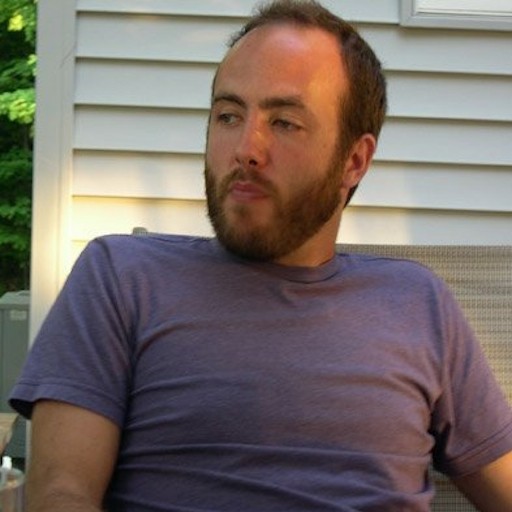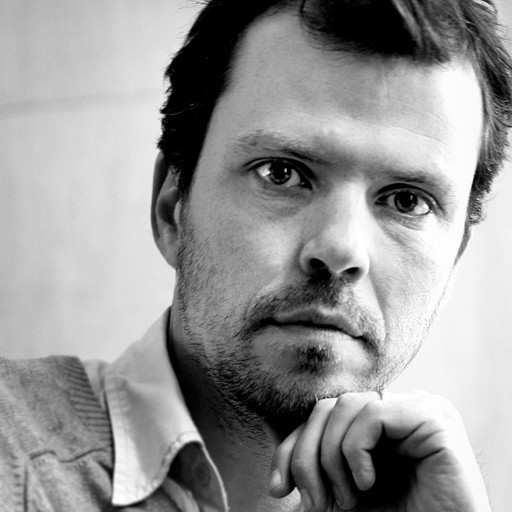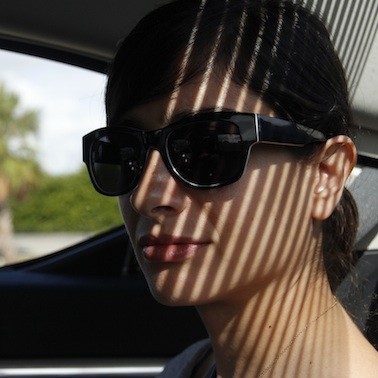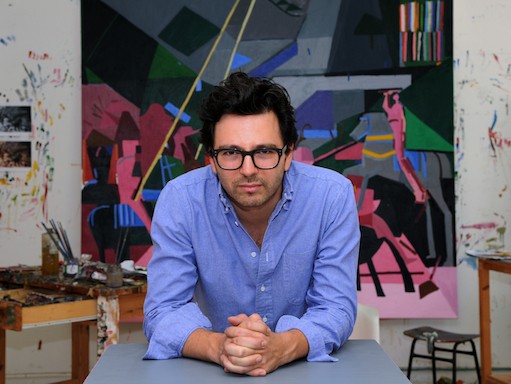The artist John O'Reilly has attracted the attention of trendsetters as diverse as Coolhunting and Art in America with his eerie white sculptures that map the bodies of men and animals with striking anatomical fidelity, somehow appearing more mortal than their living counterparts. Now the young sculptor and draftsman is branching, so to speak, into new terrain with work that applies his uncanny talents to plant life, currently debuting in the group show "A Discourse on Plants" at RH Gallery.
To learn more about this transition, Artspace's Alex Allenchey spoke to O'Reilly about his process, his love of Lucien Freud, and why a skull is like a surfboard.
Many of your earlier works, which you describe as "altarpieces" with "ghost-like, transcendental" qualities, suggest religious references, and the work you made for the exhibition “A Discourse on Plants" at RH Gallery specifically cites the yew tree, which has traditionally been associated with rebirth and life after death. How does this new series relate to the rest of your work at large?
I see plants as an expansion of my process and my larger body of work in terms of communicating with forms. In my past work, I used photos, images, and other references to trigger emotions and feelings for a piece. In regards to plants, I use more instinctual senses: combining complex gestures and going with what feels right to create the form. Also, with this new collection I am developing more abstract and gestural forms, whereas in the past I used a proportional system.
The structure of Yew strongly resembles a human form, with the tree's limbs mimicking cupped hands gathering water. As the exhibition “A Discourse on Plants” is intended to demonstrate the ways in which plants can serve as metaphors for a human world, what other similarities do you see between people and plants beyond physical resemblances?
I see plants as retainers of information—as intelligent, emotional beings. They have a way of gathering information and recording it, presenting a visual history of their experiences. For instance, the growth rings of a tree note the experiences of weather patterns and of climate changes. Even the surface of a tree or plant can tell a story; it sustains a wound and regenerates, but the experience is recorded in the scar. As a child I remember being told that if you’re quiet enough you can hear the trees tell you stories about what they have seen and heard. Now, I see this less in an aural sense and more as an opportunity for a visual investigation and revelation.
You have used porcelain and bone powder in your resin casts of humans and other animals because of its resemblance to skin. How has your sculptural process changed—if at all—when you're simulating wood or leaves?
I see the forms and surfaces of humans and plant life as one in the same. Wrinkles can be seen in both the bark and a hand, serving as not only texture but as shell with the ability to protect, sense, and feel. In making plants, I like the aspect of working directly. It allows me to be more experimental in the process. Finding a material with strength and translucency is difficult. The materials I used in Yew were successful for me because I needed to have something that is malleable and sets at the same rate as my thoughts.
You’ve only been working in sculpture for a relatively short period of time. What major obstacles did you face when you began creating artwork in a new medium, and how has your background in silverpoint drawing aided in the process?
Silverpoint is all about the line. I apply this to sculpture by using line as a contour or as a nervous system to communicate thoughts and feelings. I find it hard to have structural supports that don’t interfere with the sculpture. In drawing you are unlimited by the marks you choose to make. In sculpture the marks need to support themselves or to have a support, either visible or disguised. I used to believe sculpture forces you to be a slave to the armature, but I now see it as a way to expand on my ideas of support. In silverpoint drawing everything is so precious: each mark is permanent. In sculpture you can always correct and rework as needed—or change your perspective and wait for things to emerge. Moving from drawing to sculpture has been liberating, but it has taken time to change my thought process. In sculpture my hands have a memory of how things feel and almost guide themselves at times, whereas in silverpoint the artist is in control the entire time.
Your works are detailed and intricate, serving as near facsimiles of the subjects they replicate. How difficult is it to create these proportionally exacting figures when sculpting from memory or your own imagination rather than a found image?
Everything has a proportional system; I just follow the lines to determine where things begin, end, and connect with one another. Every line must be balanced and, if not, I feel that there needs to be a reason for the distortion—a weakness I am trying to communicate, for example. I often feel that the sculpture is trying to communicate with me, so listening to it as a guide is also how my pieces evolve and develop.
What made you want to become an artist?
I don’t remember a time that I wanted to become an artist—I feel it is something that chose me. I tried other occupations but felt that nothing fit. I like the idea of an artist as a person who can investigate many different aspects of the human experience: religion, science, psychology, sociology, biology… there is an endless array of topics to explore. In today’s world there are so many specialists, and art allows me to tinker and find my own way of understanding, hopefully successfully communicating what I experience and am most passionate about to others.
How has your work changed over the course of your career?
My work has changed dramatically over the course of my career. In the past I was concerned with making accurate drawings, and this determined the success of the piece. Over time, I questioned the purpose of it and became dispassionate about working in this way, and began to investigate sculpture. This helped me realized my voice and what I wanted to communicate. I think you need one critical life experience to find what your passions are. Not until my late twenties did I find it, and now I don’t think about things as preciously—I think in terms of expression and energy and how it feels more than how it looks.
How do you get your creative juices flowing?
I usually go to the ocean to surf. Spending time in the woods also allows me to find my inner voice. I tend to investigate something that catches my attention and idea after idea may stem from that one thing. To quote Chuck Close, “From work comes work.”
What do you hope other people get out of your art?
I hope my work gives one pause from a busy life and helps the viewer to look at things in more universal terms—that they have a moment of self-reflection and realize that life is a continual line of regeneration.
What would you be doing if you weren't an artist?
I would probably be working as an archeologist or oceanographer.
What do you collect yourself?
I collect animal skulls and surfboards. Each line in both serves a purpose. In surfboards, I really enjoy the subtle yet functional lines. Skulls have a complex set of lines, highly functional and holding the energy from which they came.
Is there any other art-historical period that you wish you could have lived through?
I can’t really think of a better time than now—it’s an exciting time that allows anyone to express his- or herself, and there are many different facets to follow, groups with which to communicate. I feel that times in the past were restricted by technology or by the dominant art movement of the time.
What is an artist's responsibility in society?
I feel the responsibility of an artist is to uncover and communicate ways of understanding and to make people conscious of things that they might otherwise overlook. It's also our job to allow people to communicate the times they live in and their human experience to past and future generations.
If you could get any artist to do your portrait, who would you choose?
I would have to say the late Lucian Freud would have been my first choice. I find the processes of his painting fascinating. Sitting as the model for many hours per session slowly breaks one down, removing one’s false façade. I wonder if this is because of the physical strain on the model or because of the trust that develops over time between the artist and the sitter.



























